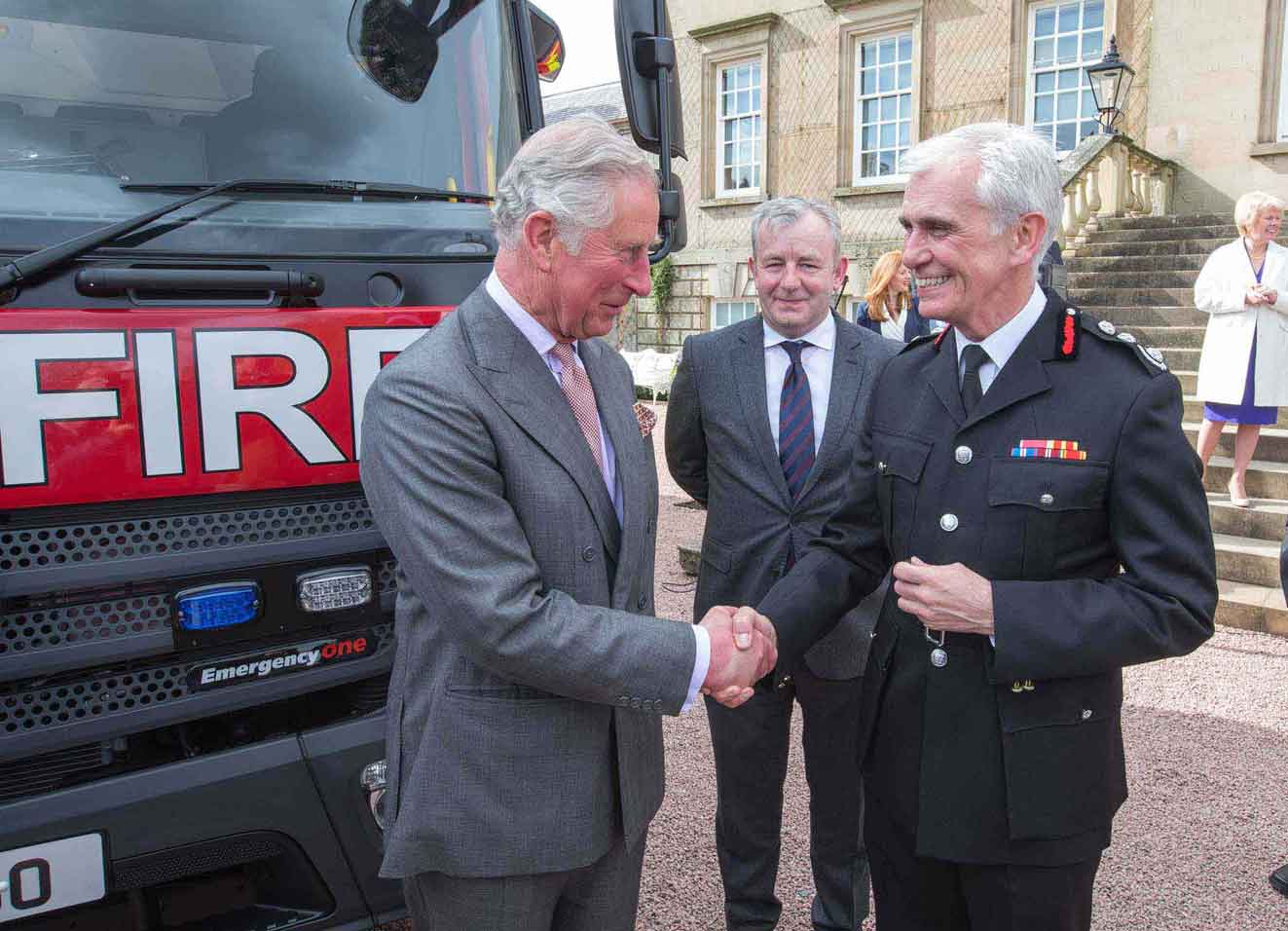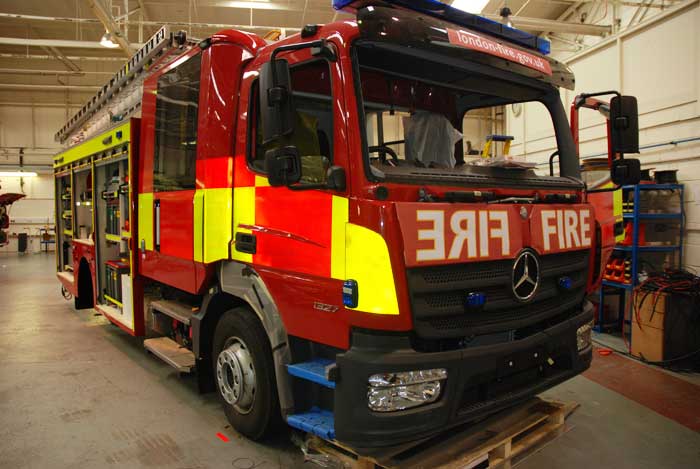Today, His Royal Highness Prince Charles inspected the prototype for the Brigade's new fire engines at the Emergency One (UK) Limited factory in Cumnock, Ayrshire.

London Fire Brigade Commissioner Ron Dobson was on hand to explain to the Prince of Wales how the vehicle's new features will support London firefighters' work.
Although the design is not yet finalised, the new model is very close to the final version. New specifications include:

London Fire Brigade Commissioner Ron Dobson said: "It was an honour to be able to show the prototype to His Royal Highness and I am looking forward to the new designs going into service later in the year.
"The Brigade is always looking at ways to improve our service to London and ensuring our pumping appliances use the latest technology and design features that will enable us to be even more efficient when responding to an emergency."
Emergency One (UK) Limited are subcontracted to build the vehicles by Babcock International Group PLC who are responsible, under a twenty one year contract, for London Fire Brigade fleet maintenance and repair.
Babcock's Director of Resilience and Emergency Services, Paul Wilkins, said: "This is a major investment and effort for everyone involved but this has also been a great way to celebrate Babcock's long term partnership with London Fire Brigade and the engineering efforts of E1."
The new pumping appliance has been designed with input from London firefighters who helped to ensure that the design meets the demands of the modern firefighter.
For example, years ago, firefighters only really used engines to attend incidents and so went on very short journeys in them.
These days, crews also use appliances to do home fire safety visits, attend community safety events and travel to specialist training exercises meaning they could spend a couple of hours sat in the cab.
With this in mind, the seating area has been designed with extra space and crew comfort with bulky equipment like the breathing apparatus sets, that would normally be stored behind their seats, now being stowed in the back of the vehicle body.
The prototype vehicle will be used for training and familiarisation to help crews get used to the new appliance. Fifty-three new engines will be delivered to fire stations across London in 2017.